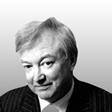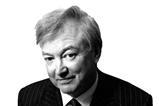Rem Koolhaas is an architect too – in fact, one of the worlds' foremost designers and quite the bee's knees in the business. He recently won the Pritzker 2000 prize, often called architecture's Nobel Prize.
Gareth Pearce didn't fit in too well during his time with Mr Koolhaas' London practice. The judge in the trial I am going to tell you about described Pearce as an emotional man whose vehemence and anger in the witness box made not much of his evidence believable.
Pearce sued Koolhaas for plagiarism of his designs for use in an exhibition centre called the Kunsthal in Rotterdam. He also accused Koolhaas of "surreptitiously and dishonestly making or obtaining" copies of Pearce's plans and pasting parts of these directly into the design of the Kunsthal. Pearce also sued the project architect, Fuminori Hoshino, consulting engineer Ove Arup and the City of Rotterdam itself. Wow!
Disappointingly for Pearce, the judge said: "The case has no foundations whatsoever. It is one of pure fantasy – preposterous fantasy at that … I am quite satisfied that Mr Koolhaas never copied [Pearce's designs] either graphically or any other way. I am quite sure that Mr Hoshino never saw or heard of Mr Pearce or his plans until this case started. The case of Mr Pearce has not remotely been made out, even to the point when such 'similarities' as there are call for explanation. Moreover, I am quite sure that the Kunsthal was the completely independent and creative work of Mr Koolhaas, assisted by Mr Hoshino." In short, he threw out Mr Pearce's complaint.
But the very strange nature of this case stems from the involvement of a fourth man. His name is Michael Wilkey.
The expert witness never even visited the building or really considered how the alleged copying could have been carried out, said the judge
Wilkey, also an architect, was engaged as an expert witness by Pearce to explain in court the 52 items of alleged copying. However, when going through the 52 items, Mr Wilkey abandoned some and retained others – but why? His reasons, said the judge, "never made any sense". The judge went through all these items. He even visited the exhibition centre to be shown the propositions. But not a single one was made out to be evidence of copying.
Wilkey said that 52 similarities of the Kunsthal design with Pearce's Docklands Town Hall model and sketches as a student was too many to be accidental coincidence. He went so far as to allege that if Mr Koolhaas denied copying he must have been lying. Oh dear. The judge rejected it all. Similarities of one sort or another are not evidence of copying. When Pearce visited Rotterdam a few years ago he could see things about the building that he could recall from his student model and sketches years before. But it is quite a leap of thinking to conclude that design similarities have been brought about by plagiarism.
The judge also said: "In my judgment, Mr Wilkey's 'expert' evidence fell far short of the standards of objectivity required of an expert witness. He claimed to have appreciated the seriousness of what he was saying, but made blunder after blunder.
"He never even visited the building; never really considered how an architect could actually have carried out the copying alleged."
Mr Wilkey's evidence, said the judge, was "so biased and irrational" that he had failed in his duty, which is to help the court – even if this overrides any obligation to the person from whom he has received instructions or by whom he is paid. "Mr Wilkey bears a heavy responsibility for this case ever coming to trial with its attendant cost, expense and waste of time," fumed the judge. And with that, he decided to ask the RIBA to examine Wilkey's professional rules and possibly visit a sanction. He gave Mr Wilkey 21 days to explain himself to the court. and only then might the papers go to the RIBA.
Postscript
Tony Bingham is a barrister and arbitrator specialising in construction. You can write to him at 3 Paper ��ɫ����TVs, Temple, London EC4 7EY, or email him on info@tonybingham.co.uk.





























